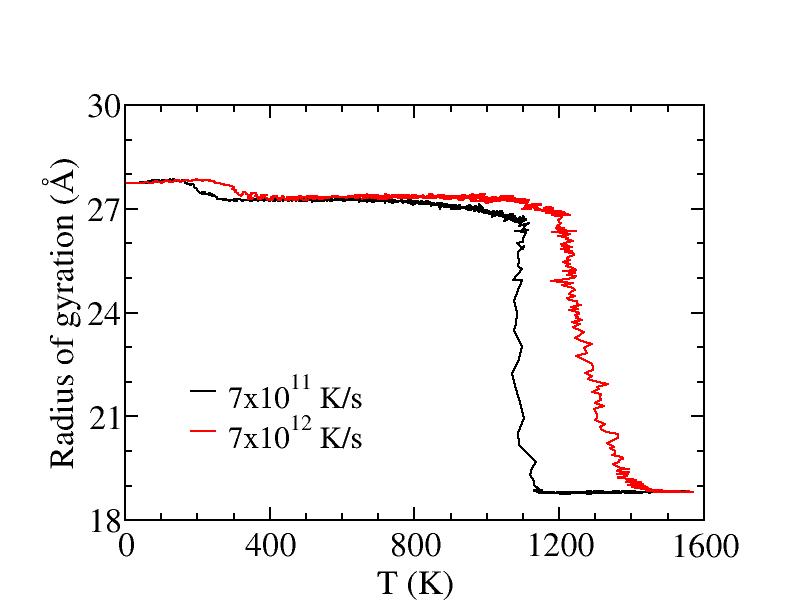September 29 2004
Continuous heating of {111} rod
Gold {111} planes were built up layer by layer to form an fcc body, and carved
out to form the rod mostly covered by {111} facets. The rod has an aspect ratio
of 3 and a width of about 2.8 nm, with 3411 atoms. The sharp edges where two
side {111} facets met were truncated to be {100} facets, so that the cross
section of the rod is near spherical. The end caps are also truncated to have
two {111} and two {100} facets at each end, so that the ends got rounder.
The constructed rod went through a constant temperature MD at 5K for 10^5 steps
(430 ps) to relax the surface.
Colored by local curvature
The following two pictures are the views of the last configuration at 5K
colored by local maximal curvature.

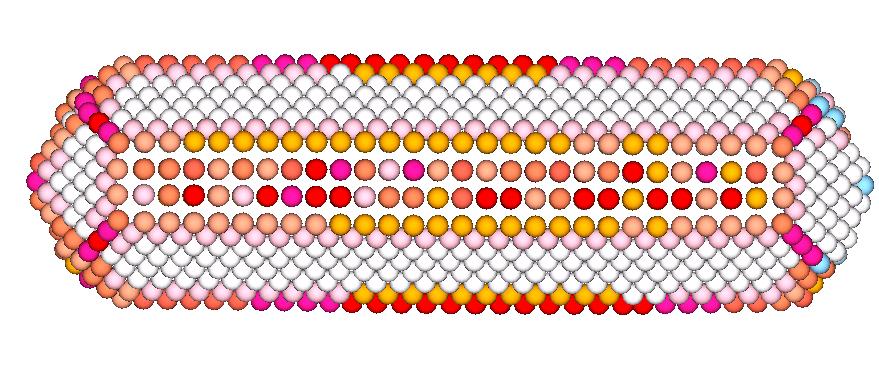
Colored by facets
The same configuration has also been colored by type of facets. Yellow atoms
are {111} facets, green atoms are {100} facets, and gray are others.
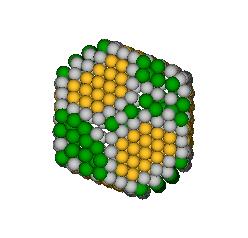
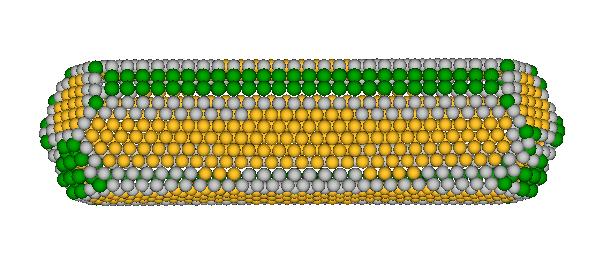
Colored by local structure
The above configuration has been cut in half and colored with the local 3D
structure to show the pure fcc interior. Yellow atoms are fcc,
green atoms are hcp, and gray are others.

Continuous heating
The above configuration then went through a continuous heating MD procedure
with a heating rate of 7*1012K/s. Note that the surface atoms were
distinguished by number of neighboring atoms, not the cone algorithm.
The sampled configurations in .xyz file format can be downloaded
here.
Temperature vs. time
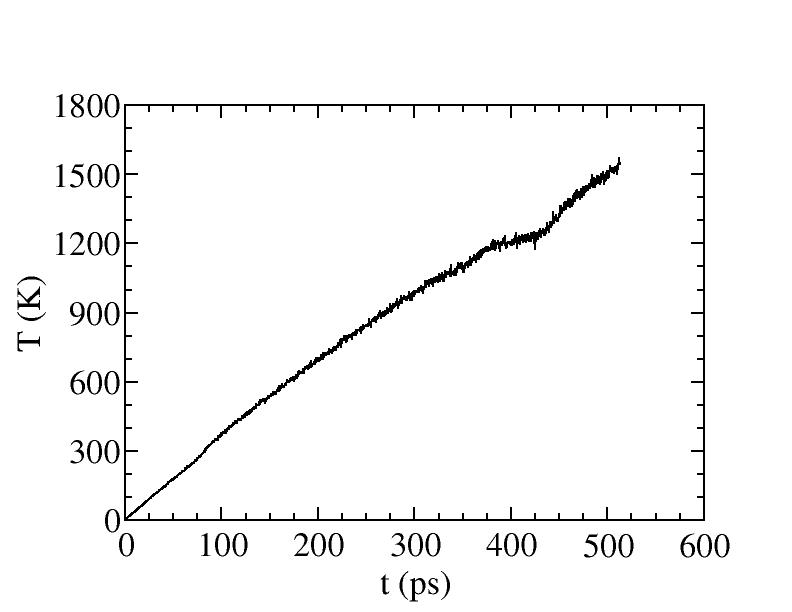
Radius of gyration vs. time
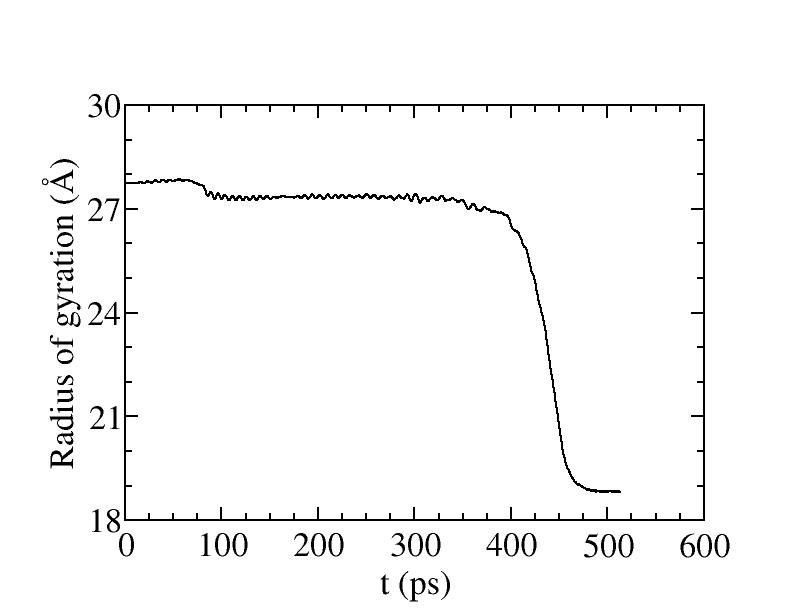
Interior bond order parameters
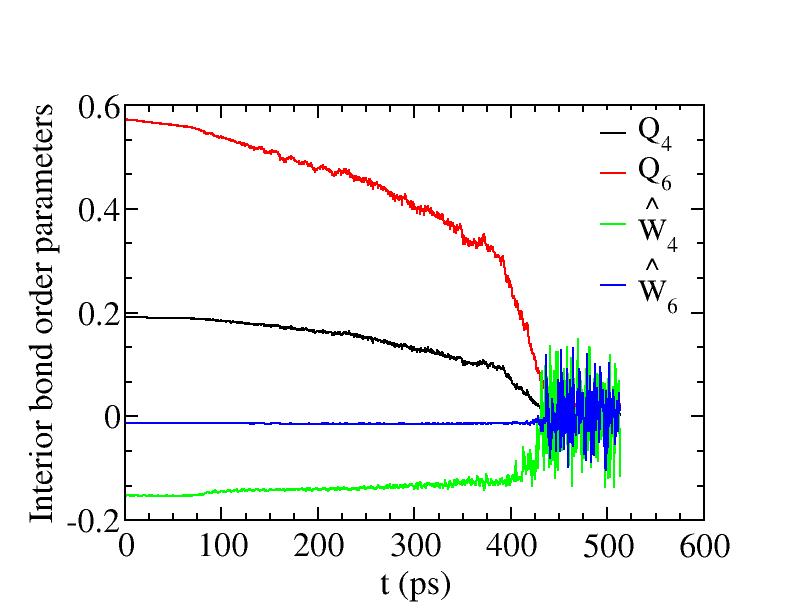
Surface bond order parameters
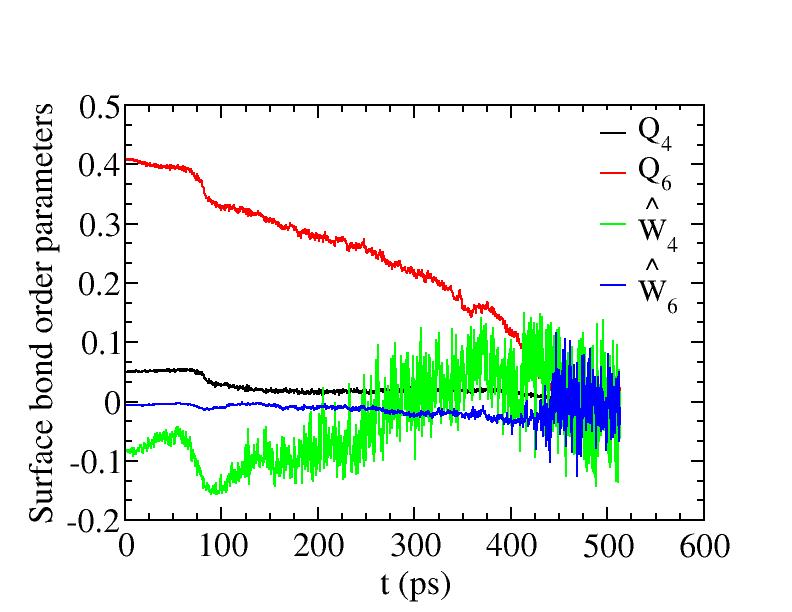
Slower heating
The same rod went through a similar heating procedure 10 times slower. Only
the radius of gyration is shown below.
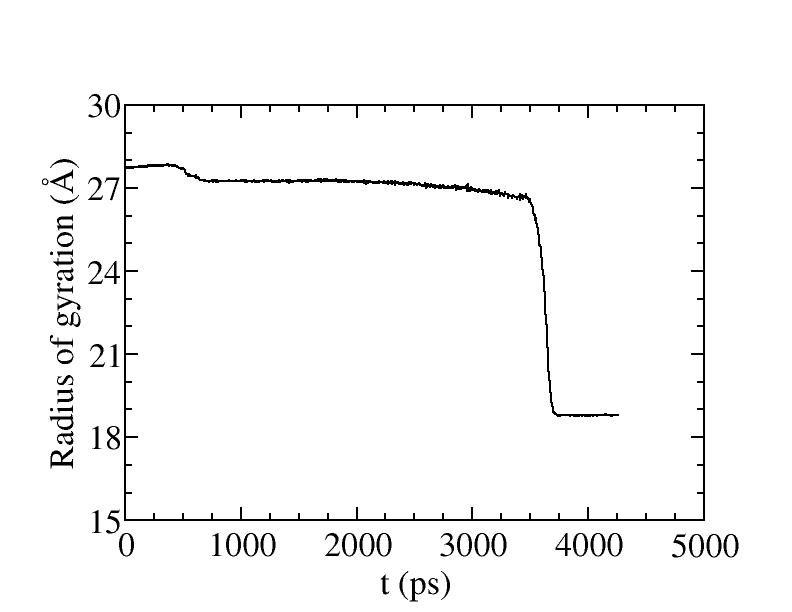
Radius of gyration vs. Temperature
